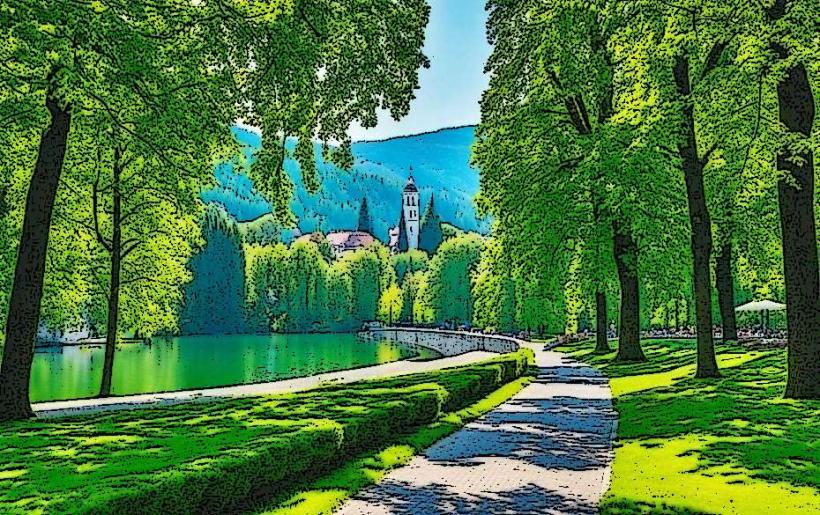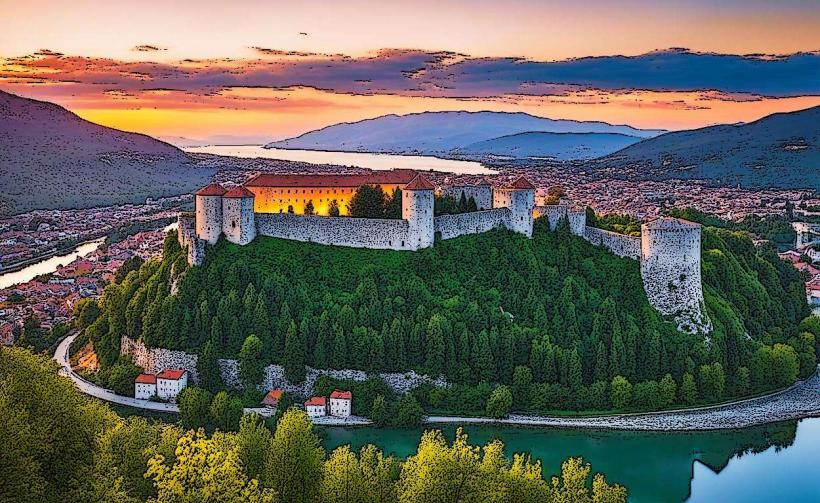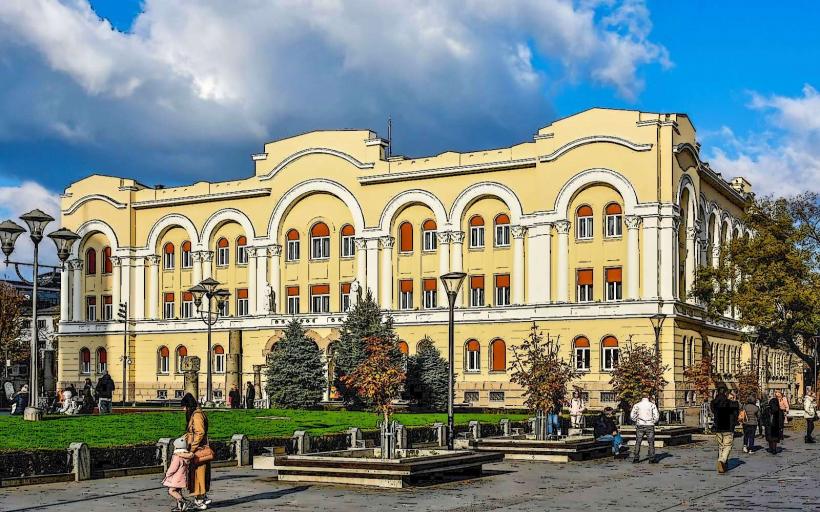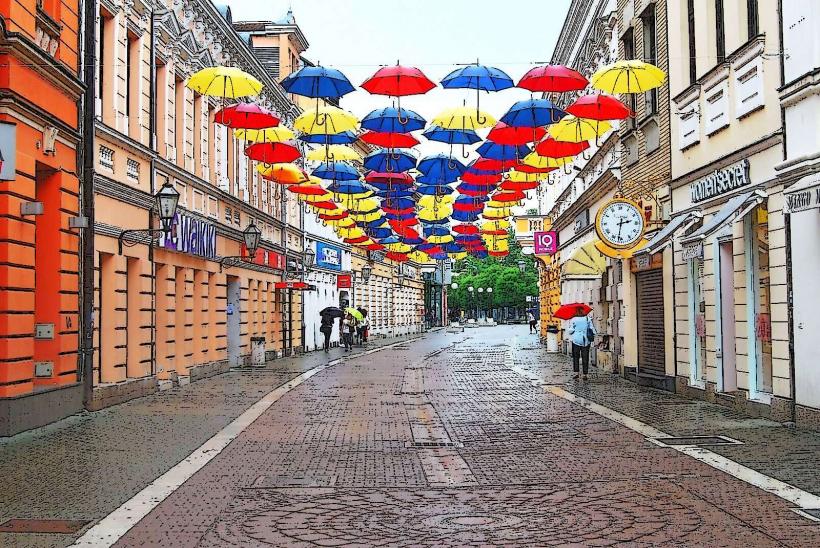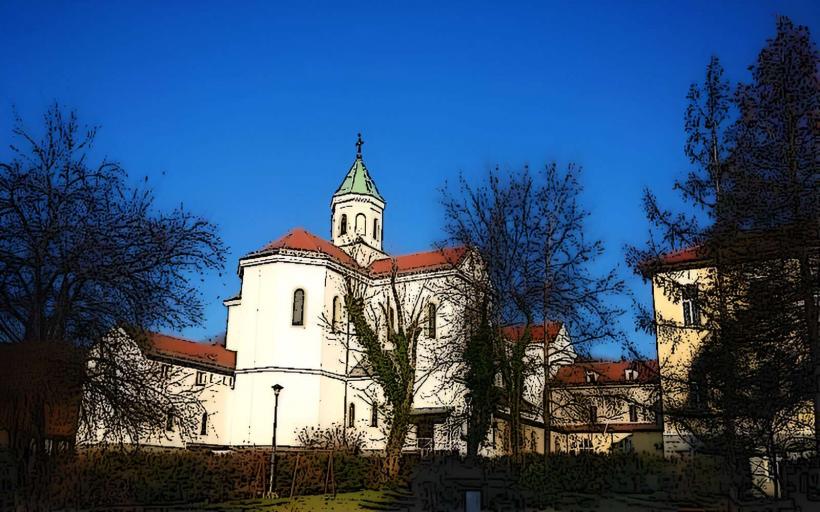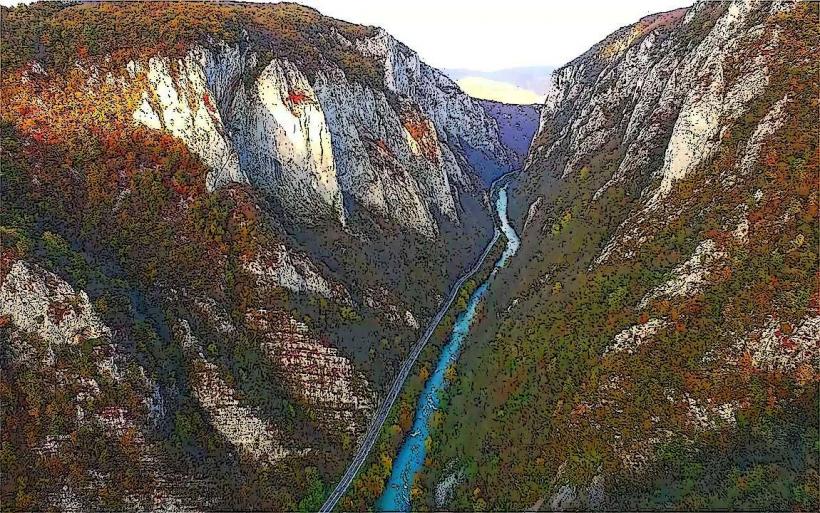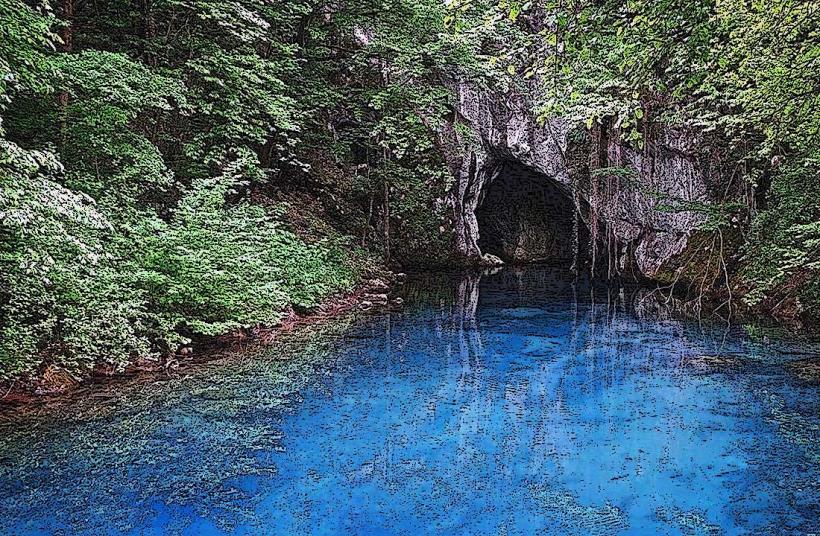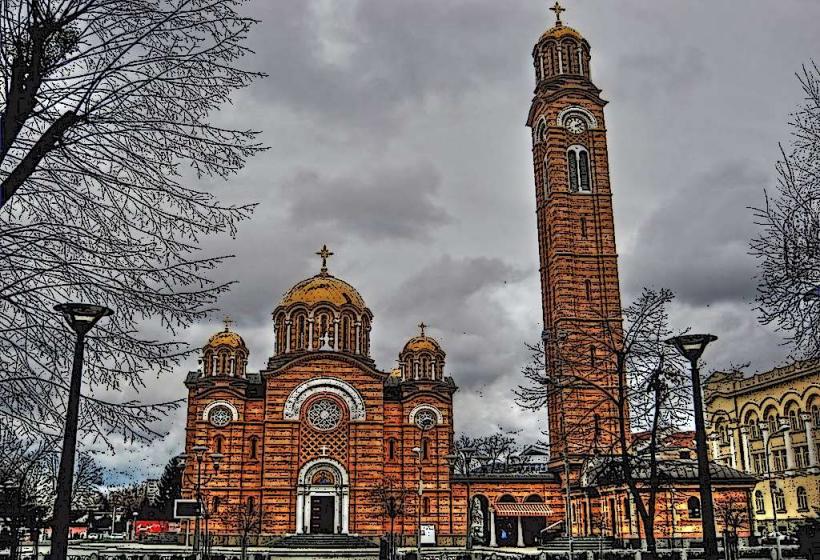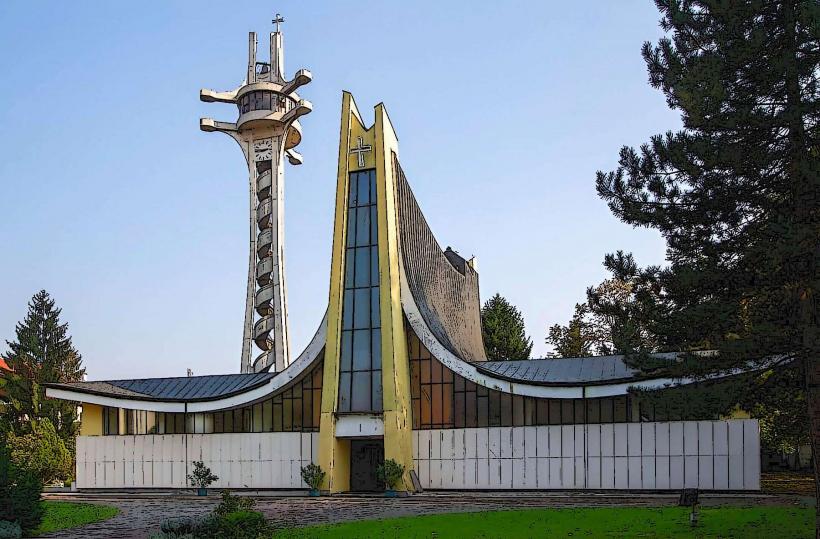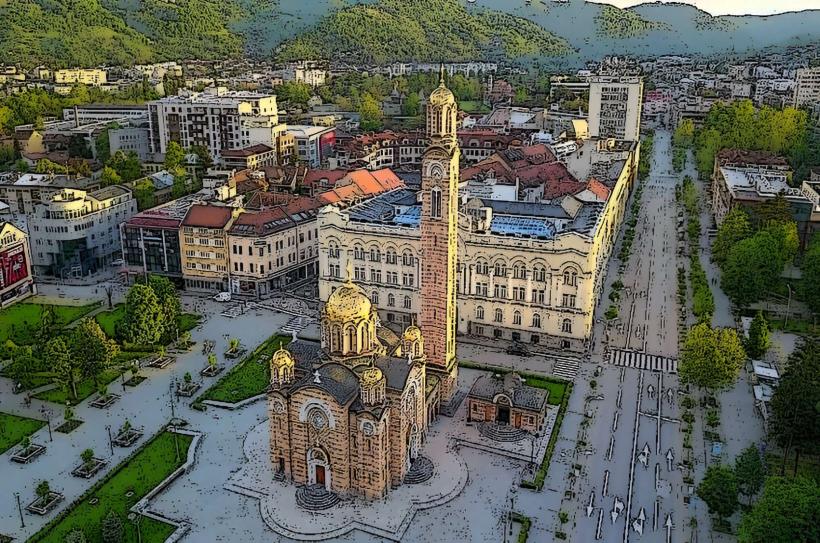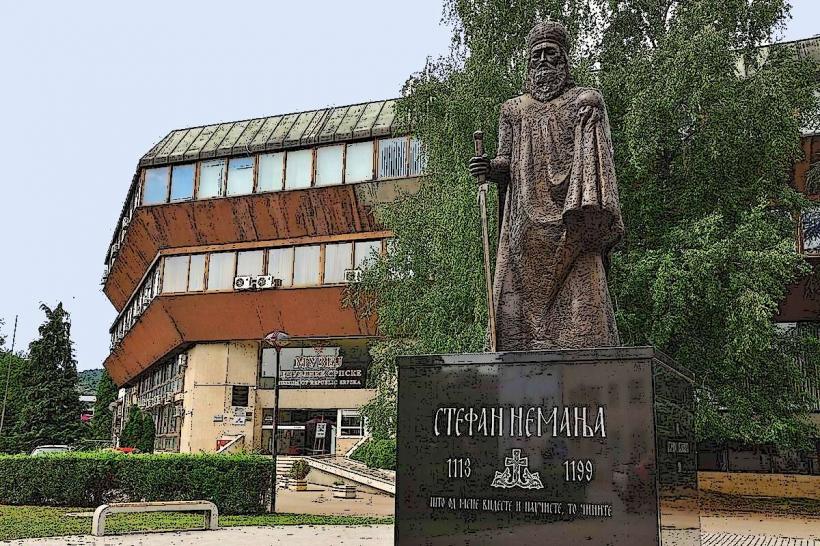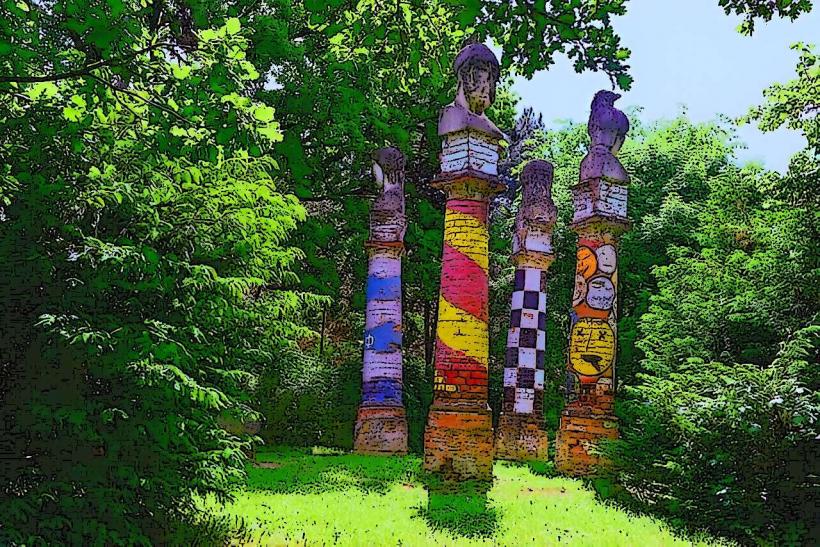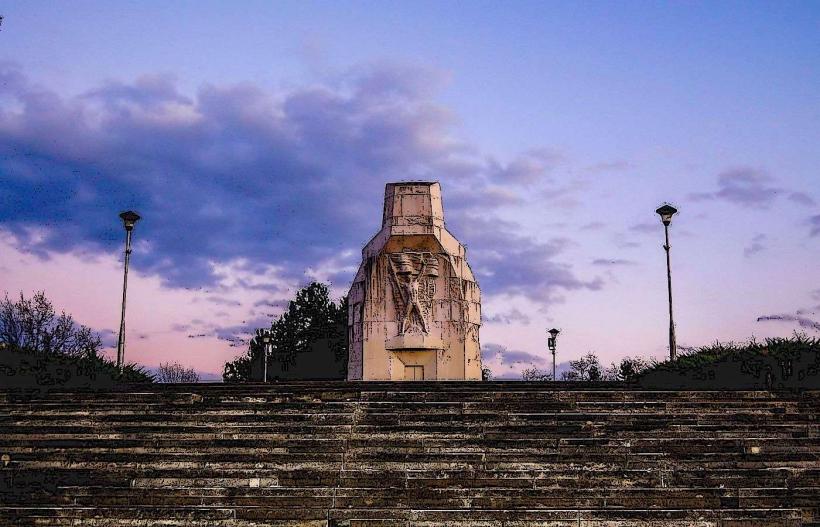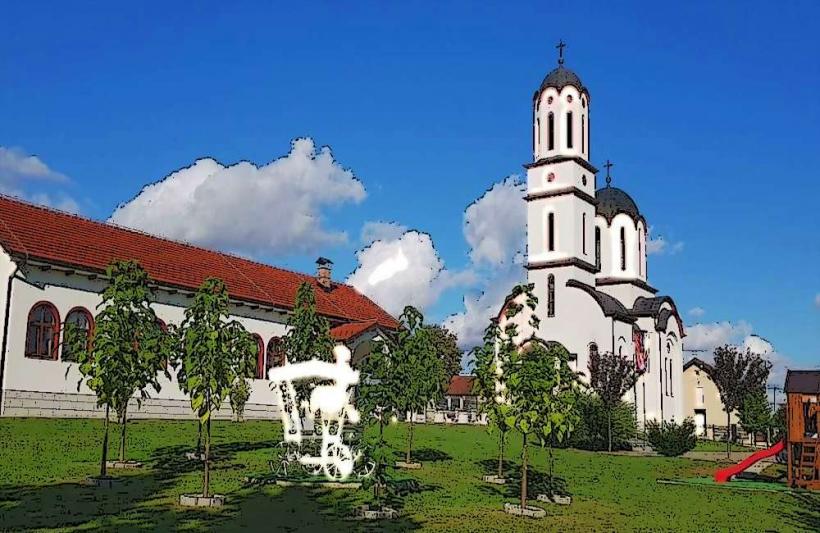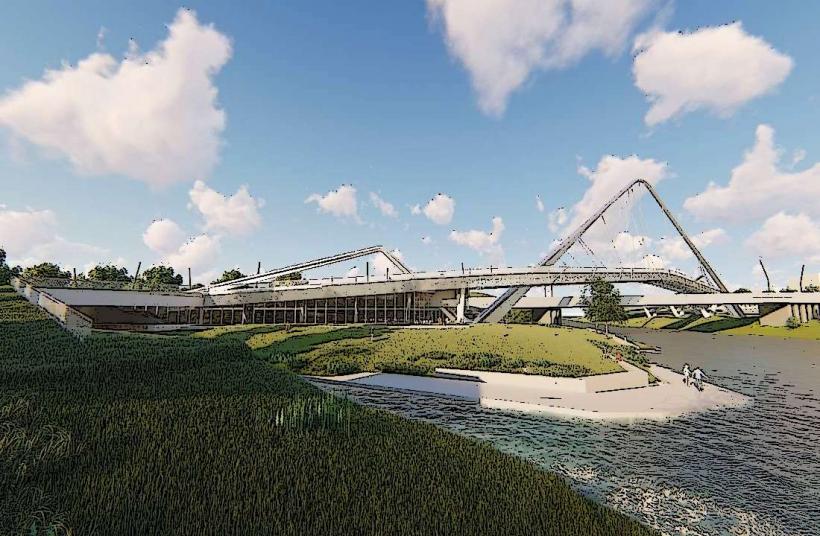Information
Landmark: Ferhadija MosqueCity: Banja Luka
Country: Bosnia and Herzegovina
Continent: Europe
The Ferhadija Mosque (Ferhat-pašina džamija) is a masterpiece of Ottoman architecture and one of the most significant cultural and historical landmarks in Banja Luka, Bosnia and Herzegovina. Known for its intricate design and historical importance, the mosque stands as a symbol of the city’s rich Islamic heritage and resilience.
Historical Background
Construction: The Ferhadija Mosque was built in 1579 by Ferhat Pasha Sokolović, an Ottoman governor, during the height of Ottoman influence in the Balkans. It was funded through his endowment (waqf) and constructed as part of a larger complex that included a school, fountains, and other facilities.
Architectural Significance: The mosque is a prime example of classical Ottoman architecture, designed by craftsmen inspired by the famous Ottoman architect Mimar Sinan. Its design reflects the sophistication and grandeur of the period.
Destruction: In 1993, during the Bosnian War, the Ferhadija Mosque was tragically destroyed. This act of cultural vandalism shocked the world and left a deep scar on the city's historical landscape.
Reconstruction: After the war, a meticulous reconstruction project began using original materials and techniques. The mosque was officially reopened in 2016, restoring its place as a symbol of cultural and religious identity.
Architecture and Design
Main Structure:
- The mosque features a single dome and an elegant minaret that reaches 43 meters in height, making it a striking landmark.
- The main prayer hall is a square structure topped with a grand dome, supported by intricately carved arches and columns.
Interior:
- The interior is adorned with geometric and floral motifs, painted in soft colors typical of Ottoman design.
- Arabic calligraphy and intricate ornamentation decorate the walls, mihrab (prayer niche), and minbar (pulpit).
Courtyard:
- The mosque is surrounded by a serene courtyard, featuring a traditional shadirvan (ablution fountain) used by worshippers for ritual purification.
- The courtyard is enclosed by a stone wall and includes smaller structures from the original complex.
Materials:
- The reconstruction utilized original stones recovered from the site and materials consistent with 16th-century construction methods, ensuring authenticity.
Cultural and Religious Significance
Spiritual Center:
- The Ferhadija Mosque serves as a place of worship for the local Muslim community and a symbol of spiritual resilience.
Symbol of Coexistence:
- Its reconstruction represents hope, reconciliation, and the commitment to preserving Bosnia and Herzegovina’s multicultural identity.
Architectural Heritage:
- As one of the finest examples of Ottoman architecture in the Balkans, it attracts scholars, architects, and tourists from around the world.
Visiting the Ferhadija Mosque
- Location: The mosque is located in the city center of Banja Luka, making it easily accessible.
- Visiting Hours: Visitors are welcome during non-prayer times. Modest clothing is required, and headscarves are recommended for women.
- Guided Tours: Available for those interested in learning about the mosque's history, architecture, and significance.
- Entry Fee: Typically free, though donations for maintenance are appreciated.
Why Visit?
- Architectural Beauty: The mosque’s elegant design and intricate details make it a must-see for architecture enthusiasts.
- Historical Importance: As a witness to centuries of history and resilience through its reconstruction, the Ferhadija Mosque tells a powerful story of survival and renewal.
- Cultural Experience: Visiting the mosque provides insight into the rich Islamic heritage of Banja Luka and the broader cultural tapestry of Bosnia and Herzegovina.
The Ferhadija Mosque stands as a beacon of faith, history, and reconciliation, offering visitors a profound connection to Banja Luka’s past and its enduring spirit.

